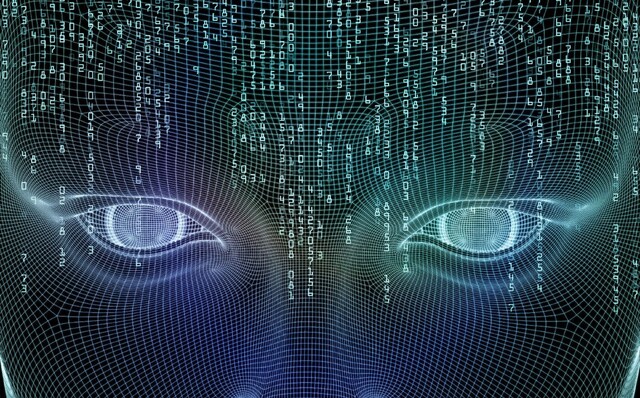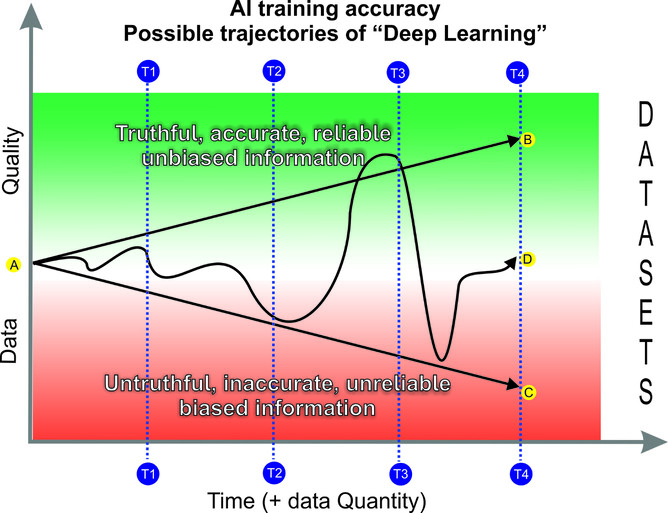Aye to AI?
This article is concerned with Artificial Intelligence (AI): an explanation as to what it is, what it is not, what equipment you need to run it, the pitfalls and dangers involved, and some of the problems unlikely to go away no matter how advanced it becomes. Of greatest relevance here is the likely impact upon, not just society, but specifically the valuation / property profession – and what we need to do to protect it. Also, and most importantly, to think about new opportunities being presented.
Significant public concern over AI
The emergence of AI is coming increasingly, and very rapidly, under the spotlight. Things are moving so fast that by the time you read this article, some aspects herein will almost certainly be outdated! Nonetheless, there has been little public airplay concerning the impact it will have on our professions.
The issue more generally has been highlighted by the unprecedented media release in March 2023 of an “Open Letter to Pause Giant AI experiments”, signed off by the world’s most prominent tech leaders (including Apple co-founder Steve Wozniak, SpaceX and Tesla CEO Elon Musk, and MIT Future of Life Institute President Max Tegmark). Along with other high-profile individuals they have taken the highly unusual step requesting intervention in the ongoing development of AI due to what they see as “profound risks to society and humanity, as shown by extensive research and acknowledged by top AI labs.” They have issued a dire warning against labs performing large-scale experiments with artificial intelligence (AI) more powerful than ChatGPT, saying the technology poses “a grave threat to humanity”.
One thing is most certain: the threat of AI to our profession goes way, way beyond anything that may have been presented by existing digital valuation tools.
How old is AI technology?
It is important to note that AI is not new. Artificial intelligence (termed AI) has been defined as any way of stimulating the kind of response a person would give from a machine. This was a term first coined in the 1940’s.
There have been many iterations of the technology emerging since. For example:
Chatbots have in existence since 1990 and even earlier. Many people will be familiar with some of the newer ones: Siri (Apple’s iOS in 2020), Google Assistant (2012), Cortana (2014), Alexa (2014) and now ChatGPT (2021).
The Chess computer was developed from 1986.
All of these things are AI.
So, what is different now?
When you think about it, computers are in one sense are pretty dumb. At the risk of oversimplifying things, the only real “intelligence” they arguably have is the ability to add up 0 and 1. But they can do that unbelievably fast! Indeed, it is binary arithmetic that forms the basis for more complex mathematical operations and logical reasoning, pattern recognition, and forms the foundation of applying algorithms to tackle various tasks.
It is acknowledged therefore that whilst computers possess “computational intelligence”, they lack other exhibitors of intelligence such as human-like consciousness or subjective experience.
Moreover, it might also be important to recognise that artificial intelligence is the simulation of human intelligence by machines. They are programmed (not “made” in a creation sense) to solve problems, make decisions, recognise images, and so forth.
Now enter the biggest change over recent years - the emergence of “General AI” alongside “Narrow AI”.
OpenAI (the developers of ChatGPT) defines artificial general intelligence (AGI) as being “highly autonomous systems that outperform humans at most economically valuable work” in a way that “benefits all of humanity.” AGI is usually regarded as being a stronger form since it has an ability to learn, and apply knowledge in a way that is claimed to be similar to human intelligence. It is by this means that General AI exhibits what seems like human-level intelligence and adaptability. Indeed, ChatGPT considers this to represent a form of “understanding”.
ChatGPT has been described as “a large language model trained by OpenAI”. The “training” aspect is based on the absorption of massive amounts of data. It is in this way that users can generate human-like text based on given input. Indeed, I would be the first to admit that it is typically difficult to distinguish from text written by a human. Unsurprisingly therefore, it has proven to be very effective in “conversation generation” and language translation.
This form of AI processing has been made possible by the development of neural networks. This is a truly quantum leap in technology; in fact, its advancement has proven to be unexpectedly very, very rapid. Perhaps the simplest explanation in contrasting this development is that instead of being created with traditional hard-coded algorithms, programmed by human beings, data now flows from neuron to neuron with different weights as “trained” by machine learning.
Do you need special equipment to run AI?
Yes…. and no!
Traditional central processing units (CPUs) can execute a wide range of tasks, including AI computations. However, they may not be optimised for the specific requirements of AI, or be able to effectively handle AI workloads. This is because AI algorithms can benefit from specialized processors designed to accelerate AI computations. The main difference here is that a traditional multicore processor (i.e. a CPU) has fixed shared interconnections often in the form of a shared cache or memory bus. CPU’s lack dedicated interconnections with non-blocking limits on computations such as that found on specialised AI processors, which are designed to efficiently handle specific types of computations required for AI workloads. This facilitates matrix operations in deep learning, including optimisation to handle the high data throughput and parallel processing needs of AI algorithms.
This means that the local distributed memory of an AI engine achieves very high performance but is also very energy efficient: there are no cache misses, higher bandwidth is obtained, and less capacity is required.
Many people, especially gamers, may already be well acquainted with and indeed using one type of specialised AI processor – a Graphics Processing Unit (GPU). This architecture was originally designed for rendering graphics in video games; but it turns out that GPUs have highly parallel architectures that can perform multiple calculations simultaneously – making them well-suited for accelerating AI computations, particularly in deep learning tasks. More custom-built solutions include the Google developed Tensor Processing Units (TPUs) – along with other AI processors such as field-programmable gate arrays (FPGAs) and neuromorphic chips. Choice will depend on the specific AI tasks being asked of it as they all have different characteristics that trade-off various characteristics such as performance, power efficiency, flexibility, etc.
Back to earth. AI is already embedded into applications being commonly used and familiar to many people. One such example is the way in which Windows uses webcam (camera) videoconferencing features such as advanced AI driven background blurring, automatic eye contact, and automatic framing and zooming. This would not be possible without a dedicated AI engine. Hardware firms such as AMD have foreshadowed that increasingly, features within Windows will likely require a dedicated AI engine. Therefore, the need to implement hardware upgrades will also be required commensurate with keeping on the cutting edge of such developments.
In summary then, whilst specialised AI processors can significantly speed up AI computations, they are not always necessary for all AI applications.
Industry warnings about “dangers” of AI
This article has already alluded to the very serious concerns coming from the tech industry leadership itself. Even ChatGPT developers on their OpenAI website heavily promote the notion of developing safe and responsible AI.
For example, Mira Murati, Chief Technology Officer at OpenAI reinforces the message of safety in stating that: “AI technology comes with tremendous benefits, along with serious risk of misuse. Our Charter guides every aspect of our work to ensure that we prioritize the development of safe and beneficial AI.” Mira adds that “AI systems are becoming a part of everyday life. The key is to ensure that these machines are aligned with human intentions and values.”
Anna Makanju, Head of Public Policy at OpenAI, also feels the need to assure the public that “we collaborate with industry leaders and policymakers to ensure that AI systems are developed in a trustworthy manner. “. Furthermore that “this technology will profoundly transform how we live. There is still time to guide its trajectory, limit abuse, and secure the most broadly beneficial outcomes.”
OpenAI have developed a Charter which describes the principles they use to execute on OpenAI’s mission. This includes an emphasis on safety aspects including a commitment to doing the research required to make AGI safe whilst being concerned about late-stage AGI development (i.e. becoming a competitive race without time for adequate safety precautions). Of course, the aspirations being expressed may not necessarily reflect what is actually happening in the workplace. But the industry should at least be commended on having drawn a line in the sand in terms of its code of conduct.
Regardless, clearly, if the industry itself feels the need to issue such dire warnings, it is therefore incumbent upon us all to sit up, listen and take notice.
Exactly what are the safety concerns and problems of AI?
There are a number of significant problem areas, including safety concerns, when using AI models; and not just the ones being presented by a “concerned” computing science industry. Specifically, I will refer here mainly using ChatGPT as the exemplar.
1. Significant socioeconomic impacts - the obvious automation potential of AI gives rise to concerns about job displacement and its impact on the workforce leading to socioeconomic inequalities ChatGPT itself foreshadows the need to “prepare for the impact of AI on the workforce and implementing measures to support workers during transitions”.
2. Inability to exercise reasonable moral judgement - at the end of the day, AI is a machine. It is not human, is not inherently emotional, and has no moral compass other than that which is fed into it – which may not necessarily represent basic societal norms or expectations.
3. Transparency, and the use of jargon - AI systems are not easily explainable. However, a modicum of comprehension is critical to ensuring their use is safe and ethical. Lack of such transparency clearly hinders trust, and raises concerns about accountability. In addition to this, the emergence of AI jargon is quite unfamiliar to most people - posing a significant challenge. A resultant limited understanding accelerates the possibility of miscommunication and misinterpretation - all serving to the making of ill-informed decisions. It is therefore argues that the prospect of AI and its incorporation into general usage poses a significant risk to a largely ill-informed population, no doubt increasingly bedazzled by the apparent intelligence of these new systems whilst doing their best to ignore the “black art” that sits behind it.
4. Biased results. Dependent upon the data they are being trained on, AI systems can present and even escalate biases present in the data they are trained on, leading to biased outcomes.
5. Privacy. Privacy breaches or unauthorised access of information is a major problem across computer platforms and their databases generally. Given AI systems typically require access to large amounts of data, concerns about privacy and data security issues become even more prevalent.
6. Reckless decision-making by autonomous systems. Concerns about the deployment of autonomous systems (i.e. those systems that make critical decisions without human intervention) may be readily appreciated when considering by way of example, self-driving cars which have become involved in accidents and even fatalities. But, the suggestion that the relatively low incidence of such accidents presents the AI system as being a “safer” alternative might be difficult to argue in the case of other applications such as autonomous weapons where safety and ethical concerns that are not so easily explainable or tolerable.
7. “Deep Learning” trajectories
This aspect is possibly the least understood, but suggested to be potentially the most pervasive and negative aspects of AI. The reason for this is the way those involved in AI development often seem to promote the idea that AI training accuracy is more or less ultimately assured given that over time, results of AI interrogation improve. This is based on the assertion that “deep learning” training can be presumed to improve outcomes as the quantum of data accessed by the AI model increases.
The problem of “deep learning” trajectory
"Training" or "learning" by AI involves feeding the model with as large a dataset as possible and subsequently allowing it to automatically learn and identify patterns, relationships, and insights within the data. This process involves a number of steps, ranging from data collection and preprocessing, model selection and “training”, through to evaluation, fine tuning and final deployment.
Whilst all steps are no doubt critical, the training part is arguably one of the most critical – or at least the part that is quite novel - since it uses the selected model (e.g. neural network) and iteratively adjusts its internal parameters to minimize the difference between its predictions and the actual outcomes in the training data. The evaluation step subsequently reviews the model's performance using separate test data that it has not seen before. This step is the one claimed to help in the assessment of how well the model generalises to new, unseen data – therefore providing a measure of its accuracy. It is these processes that are fundamental in facilitating automatic learning. Subsequently, the AI process claims that predictions can be reliably made or insights meaningfully extracted from the data.
Logically, if the process was reasonably linear, one might expect that over time, the output of an AI query would result in a more truthful, accurate, reliable and less biased outcome. Consider Figure 1 below. This kind of trajectory is represented by the line A – B, and if measured over time (X axis) one might expect the results at various intervals (T1, T2, T3, and T4) to exhibit improved outcomes since the data quality (y-axis) also constantly improves in tandem with the quantum of data (also on the x axis) available to it.
In short, this process (if true) indicates that the trajectory of “deep learning” by default should be reasonably expected to improve over time.
Figure 1 Deep learning trajectories by AI
However, the foregoing only holds true if the dataset being accessed by the model is capable of determining the truthfulness, accuracy, reliability and / or level of bias pertaining to the information. It clear that even humans sometimes have difficulty in determining such things. Therefore, the real danger for AI lies in the ability of a neural network to work out where along the continuum (or the Y axis in our model) the quality of the datasets it is interrogating and “learning” from sits. That is quite apart from the complexities involved in preprocessing activities, i.e. data cleaning or transformation such as removing (or considering) data outliers, missing values, or duplications – along with the numerical representation (coding) of categorical values and so forth.
A simple investigation, testing the robustness of AI training and deep learning may be determined by conducting actual conversations with an AI model with a set of predetermined questions, and looking at the results obtained over time. The downloadable attachment located at the conclusion of this Blog records my conversations that were conducted up to two months apart commencing March 2023. The outcomes were somewhat surprising:
As you might expect, in some cases answers to the same question were embellished or expanded upon over time. For example, Questions 1, 5, 6, 7, 8, 9, 10, 11, 12.
Therefore, the likely trajectory of AI and the output as a result of training may be represented by line A – B in our diagram.
Other comparisons indicate that sometimes the “answer” is completely avoided despite being answered comprehensively in an earlier iteration of the technology. For example, Question 3.
Therefore, the likely trajectory of AI and the output as a result of training is uncertain – but might be arguably represented by either line A – C , or A – D in our diagram (or some variation in-between).
On other occasions, answers actually degrade over time. For example, Question 4.
Therefore, the likely trajectory of AI and the output as a result of training may be represented by line A – C in our diagram.
Finally, there are occasions where the answer is consistently avoided. For example, Question 2. This might represent an appropriate model reversion, applying where harmful content is intentionally avoided due to privacy or other reasons.
Therefore, the notion that there is inevitably an “improvement” over time does not necessarily hold true. As may be observed, the possibility that incorrect information is somehow “corrected” over time may be completely inaccurate – in fact, on occasions the trajectory of misinformation actually increases. Accordingly, the likely trajectory of AI and the output as a result of training may be more accurately represented by a randomised version of line A – D in our diagram.
Whilst these shortcomings may no doubt improve with later versions (the version I had access to was ChatGPT version 3.5), for reasons previously mentioned herein, AI systems will inevitably, on occasion, as quoted from Chat GPT itself, “generalize incorrectly or exhibit unpredictable behaviour in real-world scenarios”. However, a new opportunity for the professions is thus presented: a matter explored now.
What should be the valuation and property profession’s reaction?
In short. grasping opportunities.
Whichever way you look at it, AI has undoubtedly profound implications for valuation and other property professions such as Planning and Quantity Surveying. The impact cannot be underestimated.
AI is certainly capable of overtaking at least part, and probably a significant part, of what valuers and other property professionals do. Bearing in mind that since ChatGPT version 4 and technologies beyond that will be far more capable than version 3, the threat to our profession goes light years beyond anything posed for example by mass appraisal systems and Automated Valuation Models (AVM’s).
It is submitted that rejecting such technology is futile. Any attempts to styme development is ultimately bound to fail since its intrusion, one way or another, is assuredly inevitable.
One reaction might therefore be to look at the possibility of actually embracing the technology and working out ways in which our profession may look to change in order to accommodate its emergence.
The shortcomings mentioned above – especially those relating to the problem of “deep learning” trajectory, actually give rise to possibilities, nigh opportunities, for our profession’s intervention - potentially very positive for businesses concerned and the profession generally.
However, legislative and regulatory controls may not readily accommodate such changes. The industry therefore needs to be poised to meet these challenges, advocate for change where / if required, and look at new ways of working in tandem with the technology, rather than working against it.
Where to from here?
It seems prudent that some sort of industry-wide response to the threat posed to our profession be explored. With urgency. The evolution of an AI Thought Leadership Group comprised of industry leaders should be explored. It needs to be developed beyond just a “talk-fest”. Most importantly such a Group should not be relegated to technicians and others whom may already be familiar with the technology. It needs to be taken up by the leaders of organisations whom have the capability and authority of navigating the industry through what will no doubt prove to be a very challenging time.
As Bill Gates recently tweeted:
“The risks of AI are real, and they can seem overwhelming—but the best reason to believe we can manage them is that we’ve done it before. History shows it’s possible to solve challenges created by new technologies, and if governments and the private sector do their parts, we can do it again”.
You are probably right Bill. But as he says, we need to do our part. And it certainly won’t happen by the industry just hoping it ultimately won’t affect them, or simply believing that we can just let technocrats deal with the issue. It needs leadership and a collective voice which must somehow be heard above the noise.



